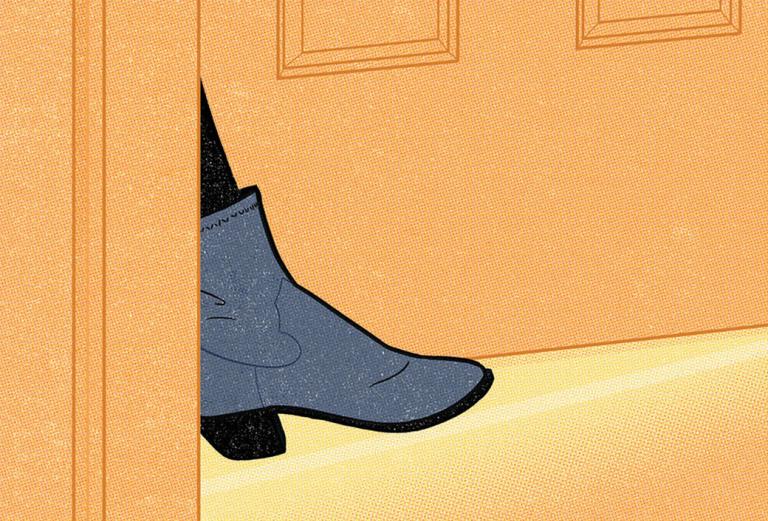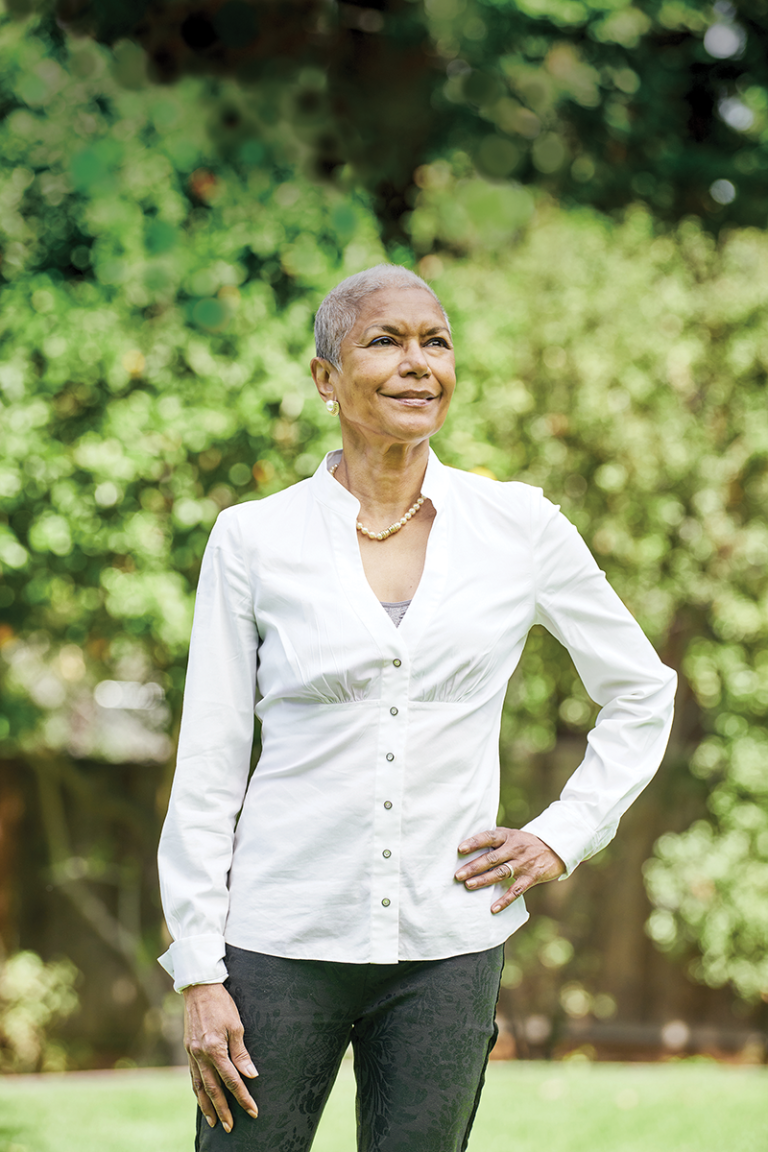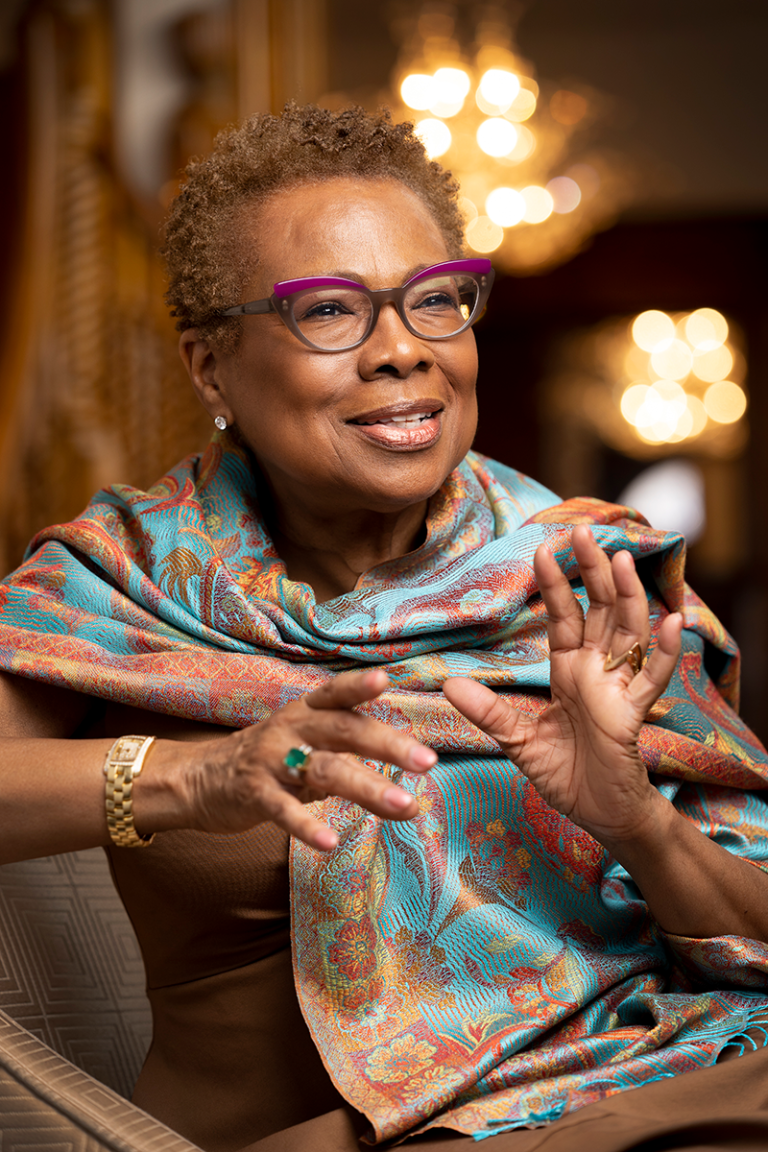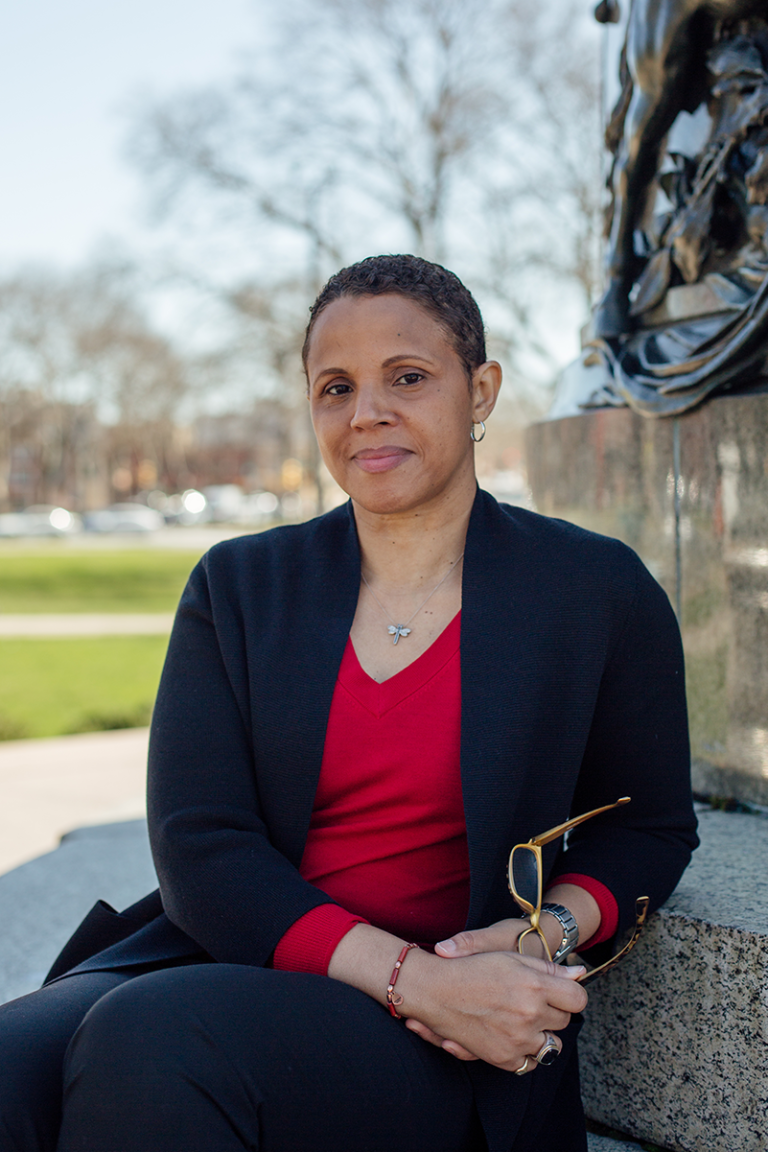A Place in the Room
Women are advocating for advances in women’s health
- 15 minute read
- Feature

In 1970, a typewritten 193-page book, Women and Their Bodies, by the Boston Women’s Health Collective, shocked and changed the nation. In an era when doctors, nearly 93 percent of whom were male, patted women on the head and told them not to trouble themselves with what was in the pills they were taking, routinely dismissed their symptoms as psychosomatic, and spoke to their husbands as if the patient herself wasn’t in the room, the book covered, openly and in detail, such taboo topics as menstruation, birth control, and abortion. Religious leaders labeled the book obscene, and it was banned from high schools and public libraries.
Now a classic in its ninth U.S. edition, the book, which in 1971 became Our Bodies, Ourselves, was revolutionary: It introduced a wide audience to the concept of women taking charge of their own health. Since its release, women’s health has come a long way, not only in public awareness but also in the changing face of the medical profession and the recognition that from a research perspective, “we can’t just assume women are little men,” according to Dara Kim Lee Lewis, MD ’92, an HMS instructor in medicine and associate physician at Brigham and Women’s Hospital and co-director of the Women’s Cardiology Program and director of noninvasive testing at the Lown Cardiology Group in Chestnut Hill.
But women still have far to go before they reach parity with men in all aspects of health care.
“There are a lot of different parts of the medical ecosystem with many different players, and each one needs a different intervention,” says Anula Jayasuriya, MD ’89 PhD ’91, who in 2013 founded the venture fund EXXclaim Capital, which was a pioneer in its focus on investing in women’s health.
Subscribe to Harvard Medicine magazine
For women, she says, it’s vital to have an increased awareness of the gaps in women’s health research and advocacy to remedy the status quo. For physicians and other health care providers, it’s essential to understand biological differences between sexes and genders in order to deliver optimal care. For academics, it is crucial to get women into trials and to analyze the sexes separately in order to generate accurate scientific outcomes, and governments need to incentivize that goal. Entrepreneurs, Jayasuriya says, need to consider the unmet needs of women when exploring novel devices, diagnostics, and therapies, and investors need to fund them. Then, she adds, “the company developing the innovation has to go through a whole chain that ultimately results in success when some bigger company buys it or it goes public and provides good financial returns to investors who took the risk and funded it.”

Underlying it all is a basic truth that’s often overlooked. “Understanding women’s health helps men’s medicine too,” says Eliza Lo Chin, MD ’93, executive director of the American Medical Women’s Association (AMWA) and an assistant clinical professor of medicine (voluntary) at the University of California San Francisco. “That’s why AMWA calls it sex and gender health rather than women’s health,” Chin says. “Because it’s about improving health care for everyone.” By analyzing the sexes separately, for example, researchers have discovered that colon cancer tends to strike men earlier in life than it does women, that depression is more common in women but deadlier in men, and that men are more likely than women to develop Alzheimer’s at a younger age.
To start making headway in discerning sex- and gender-related differences in health outcomes, says Chin, we must first recognize that “women’s health isn’t just what some people would term ‘bikini medicine’, that is, with the focus on breast and reproductive health. We still focus on traditional women’s issues like cervical cancer, which is on the horizon for eradication, but it’s also about all these other systems.”
“One way to parse the universe,” Jayasuriya suggests, “is ‘only in women’, which would be reproductive health; ‘predominantly in women’—some examples are autoimmune diseases like lupus and rheumatoid arthritis—and ‘different in women’, like cardiac disease, which is furthest along in our understanding.”
We now know, for example, that heart disease, the leading cause of death in the United States, can present differently across sexes, with women more likely to have symptoms such as extreme fatigue, indigestion, and neck or shoulder pain rather than chest pain. Yet despite several massive public health campaigns over the past two decades, women still have a 50 percent greater chance of getting an incorrect diagnosis, even after having had a heart attack. According to a 2020 study in Circulation, only 38 percent of participants in cardiac trials are women. However, women can have worse outcomes from certain types of heart attacks. According to 2018 research from Sweden’s Karolinska Institute and the UK’s University of Leeds, women with acute myocardial infarction had higher excess mortality than men. This finding, says the World Heart Federation, indicates that women are “up to three times more likely to die following a serious heart attack than men as a result of receiving unequal care and treatment.”
Listen to the women
If our understanding of how the highest profile, biggest-killer disease affects women still hasn’t reached parity, what hope do we have? Most experts say achieving balance starts with research. Historically, women were left out of scientific studies because, well, they were women; then, in more recent times, according to gender historians and other scholars, the variability introduced by hormones was blamed. In 1977, the FDA issued guidance recommending that women of childbearing age be excluded from the early phases of drug evaluation studies, largely in response to the thousands of stillbirths and birth defects caused by the use of the drug thalidomide in pregnant women with nausea in the late 1950s and early ’60s.
But as the years passed and feminism became more the norm, women grew increasingly vocal about the absurdity of medical science basically ignoring half the population, and by 1987 the National Institutes of Health urged the inclusion of women in its guide for grants and contracts. When the General Accounting Office later found poor adherence to this recommendation, Congress passed the NIH Revitalization Act of 1993, which, among other things, required grantees to include women and minorities in their cohorts.
Today, while many research groups are made up of men and women in equal proportions, many still are not, depending on the field of medicine, the trial phase, and other factors, according to a study published in JAMA Network Open in 2019. The possibility of women being unknowingly pregnant while in a trial remains a fear for many researchers, but usually by the time human trials begin, says Siobhan Dolan, MD ’93, vice chair for research in the Department of Obstetrics, Gynecology and Reproductive Science at Mount Sinai Health System in New York City, “animal and theoretical data are pretty clear that there is or isn’t a risk to pregnancy. I’m not saying pregnant women should be first in line for studies, but when pregnant people are systematically excluded from all studies, are we hurting women in the name of helping them?” The very idea that pregnant women need special protection, she suggests, is paternalistic. “Women can make decisions,” she says. “They’re super smart. Give them the data, obtain informed consent, and respect their autonomy.”

Technology may soon be used to get around this issue in some cases. Three-dimensional organ-on-a-chip systems, which attempt to simulate the mechanisms and responses of entire organs, can be used to mimic the menstrual cycle, the female reproductive tract, and the placenta and to test whether drugs taken during pregnancy can cross the placenta to the fetus.
It isn’t only women who are underrepresented in research and clinical trials, though. “Even when there is an equal number of women, the question is who are the women?” says Marsha Henderson, a retired associate commissioner for women’s health at the U.S. Food and Drug Administration. “There’s a dearth of people of color in these trials, and it’s a problem.”
The coronavirus pandemic showed that this needn’t be the case. “Vaccination companies planned in advance and they had good diversity,” she says. “They had to, because their market for the vaccine was worldwide.”
Older people, too, are underrepresented in studies overall and even in those for the COVID-19 vaccine, according to a study published in JAMA Internal Medicine in September 2020, although the disease has had a disproportionate effect on them. Even male research mice outnumber female ones by as much as five to one, and bench scientists rarely consider whether the cell lines they’re using are male- or female-derived, though a 2014 study found that “far from being irrelevant, genes expressed on the sex chromosomes can have a marked impact on the biology of such diverse tissues as neurons and renal cells.”
The seats of power
And it’s not only research cohorts and materials that are unequal; it’s who is doing the studies. “We have to look at subsets of misogyny,” says Suzanne Poppema, MD ’74, author of Why I Am an Abortion Doctor and a founder of Physicians for Reproductive Choice and Health in New York. “There are a lot more women and people of color going into medicine now, but they’re still not getting leadership positions.”
Even when there is an equal number of women, the question is who are the women? There’s a dearth of people of color in these trials, and it’s a problem.
In 2019, for the first time, women slightly outnumbered men in medical schools, though UNESCO has found that worldwide, less than a third of researchers are female. Fewer women are principal investigators, and among first-time PI grant recipients, women received a median of nearly $127,000 in funding compared with a median of almost $167,000 for men, according to a 2019 study from Northwestern University.
The disparity was even worse at the university level. As more women start practicing, the focus of research should start to shift, says Lee Lewis, because “there’s a special thing that happens when a lot of women become doctors. It’s that people start paying attention to things they never have before. If you haven’t experienced it, it’s hard to really understand PMS, menopause, pregnancy, and menstrual cramps.”
But still, “you can’t assume a female doctor who’s been through the same medical education and read the same studies as a man will be better at recognizing issues just because she’s a woman,” says Elizabeth Garner, MD ’94. Garner, an OB-GYN and chief medical officer at ObsEva, a clinical-stage biopharmaceutical company specializing in women’s reproductive health, knows from firsthand experience just how insidious it can be to not be able to identify with your patients. “My listening skills and the way I interacted with my patients, especially those in the postpartum period, changed completely once I had a baby. Completely, overnight.”

Many agree that change needs to focus on those who hold the purse strings the vast majority of the time. “It’s not that men aren’t interested,” says Garner. “They’re just not aware. Of the hundreds of investors I’ve met with, I’m going to guess maybe fifteen to twenty-five have been women. And when a woman is in the room, she’s generally not the decision-maker; after her meeting with us she presents our story to whomever actually makes the call, and that’s virtually always a man.” Yet even though women might rarely be in the room—the National Venture Capital Association puts the percentage of male partners in venture capitalism at almost 90—once men are exposed to the actual numbers, Garner says, “they’re like, ‘Wait, what? Contraception is a $5 billion market?’”
“I don’t understand the disconnect,” she adds. “Not only is half of the world’s population female, but women make most of the health decisions for their families.”
To date, women’s health has been perceived as less lucrative, says Jayasuriya, with many investors and pharmaceutical companies considering it a niche market. “Many women are aghast at this view,” she adds. “Their rejoinder is to ask how it can be a niche when women make up more than fifty percent of the population.” But numbers, she points out, are only one metric. It’s also about the price the market will bear.
“Look at the ‘hot’ pharmaceutical sectors today,” says Jayasuriya. “The focus is on markets that are small, based on the numbers: immuno-oncology, rare or orphan diseases, gene and cell therapies. Why? Because the pharmaceutical model today is not about the size of the market; it’s about what you can charge. If you can charge half a million or even a million dollars per patient to a few people rather than fifty dollars to millions of people, it’s more efficient: You can employ a much smaller sales force.”
Perhaps, but according to the 2019 book Vagina: A Re-education, by the London-based journalist Lynn Enright, erectile dysfunction, which affects about a fifth of men, is studied five times as much as premenstrual syndrome, which the MGH Center for Women’s Mental Health says affects up to 90 percent of women with regular menstrual cycles.
The tech advantage?
That kind of imbalance is finally beginning to change, in part thanks to technology. Telemedicine, for example, which holds great promise but has been bogged down by regulatory and insurance issues, became common during the pandemic. It’s expected to continue as part of the health care landscape once things return to normal, allowing people in underserved areas, overscheduled women dealing with childcare and transportation issues, and rural residents to have greater access to doctors and mental health providers. “The biggest obstacle to telemed has been acceptance, by the patient and the provider,” says Henderson. “That has gone away. We have it now and don’t want to lose it.”
Telemedicine is also providing a somewhat under-the-radar solution to one of the biggest ongoing problems for women’s health in this country: abortion access. Poppema works with a service that provides internet-based medical supervision for women all over the country to quickly get mifepristone and misoprostol, popularly known as the abortion pills.
“When clinics here were allowed to reopen after the initial COVID-related closings, they realized they could do no-touch abortions by telemed,” Poppema says. “Medical abortions have a long track record of safety; they’re totally private because no one can tell you took the medications; and they give women back their most basic human right: personal autonomy.”
Beyond that huge step, which is being challenged by many conservatives in Congress and is expected to be heavily litigated, the financial data and software company Pitchbook predicts that “femtech,” or software and tech-based devices, diagnostics, products, and services focused on women’s health, will be a $3 billion industry by the end of this decade.
“The advent of digital health brought down the barriers to entry for entrepreneurs,” says Jayasuriya, “so there’s been a burgeoning of opportunities in apps and wearables.” They may not make doctors or society take women more seriously on issues like period pain or menopause, she says, “but they empower women to take their own health more seriously, which may eventually help move the needle.”
While the apps are selling better than expected and there’s a fair amount of media buzz out there about femtech, Jayasuriya says, “what lags is how much money there is to be made. There haven’t been that many big successes yet. So although the pipeline is expanding, the exit part of the ecosystem—IPOs and acquisitions—is lagging. The business case has to be compelling.”
Forbes recently called women’s health care “a market ripe for disruption,” and there’s some indication that that’s beginning to happen. “When it comes to women’s health, people often say the big pharma companies have ‘left the building,’” says Garner. “They just don’t want to do it. It’s a lot of work to explain future potential in women’s health to investors, especially given the current focus on cancer and rare diseases. But what’s promising is that now that seems to be changing.”
Merck just spun off its women’s health division into a new company called Organon, which, according to the investor site The Fly, is expected to generate more than $6 billion in revenue this year and aims to be a leader in the field. Health care giant Bayer expanded its women’s health care drug development pipeline in 2020 by acquiring a UK-based biotech company that is working on a novel treatment for hot flashes—one that is based not on replacing hormones but on short-circuiting the signaling pathway. “Giving or blocking hormones is very effective for many conditions that affect women,” says Garner, “but there are associated risks, and the research sort of ends there. So, it’s very exciting to see efforts to better understand the root cause.”
The movement among investors may be getting a boost from greater awareness and women’s willingness to be more vocal about their concerns—perhaps, say Lee Lewis and Garner, thanks in part to the Me Too movement’s breaching the dam of silence. We still haven’t completely overcome the stigma of discussing women’s health that prevailed when Our Bodies, Ourselves came out, they say, but doing so can only lead to better outcomes. “Infertility, miscarriage, hot flashes, heavy bleeding,” says Garner, “these are challenges that so many women face, yet most of us suffer in silence. A woman might take a day off from work because she’s having a particularly heavy period and won’t tell her boss why, even if that boss is a woman. If we can’t even share this stuff with other women, how the heck are we going to increase the visibility of all the health issues we’re dealing with on a daily basis?”
Still, says Lee Lewis, women’s health is finally getting on people’s radar. “Doctors and patients are starting to recognize that we have different biology, different genetics, and different risk and experience, and require a different approach,” she says, “and it has shined a light on this problem. It hasn’t happened overnight, and we’ll continue to advance over many more decades, but the light is on, and that’s a reason to be optimistic.”
Elizabeth Gehrman is a Boston-based writer.
Images: Jori Bolton (illustration); Jay Watson (Jayasuriya); Mark Finkenstaedt (Henderson); Andrew Piccone (Garner)